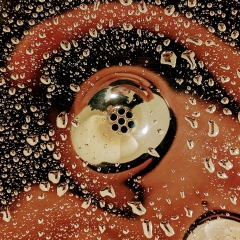Automate deleting old Google emails and calendar events
Take control of your old data
Published Feb 18, 2021 • Last updated Feb 19, 2021 • 3 min read
Google introduced auto deletion for web, YouTube, and location activity back in 2019, but hasn’t come out with official solutions for their other products yet. Notably, gmail and gcal have data that likely isn’t needed after some number of months.
To automate deleting old data, Google Apps Script is the handiest tool available. Off we go:
- Creating a script
- Scheduling scripts as CRON jobs
- Using scripts across multiple Google accounts
- Thorn: Google accounts in the Advanced Protection Program
- Appendix
Creating a script #
Visit script.new and write your own code, or paste in the solutions I’ve been using from the appendix. Hit save, and the editor will automatically pick the first function it sees to run by default.
You can then click on Run to execute the script manually, giving it permissions to access your account.
Note: the first time you run a script operating on lots of data, it will probably fail several times with various quota errors. You can either continue running it manually until the script reaches a steady state (having processed all your data), or move on to scheduling it and let things eventually sort themselves out.
Scheduling scripts as CRON jobs #
Once you’ve executed the script at least once to give it the correct permissions, you can use the Triggers page found in the left sidebar to schedule your script for periodic execution. The defaults when you add a trigger are good enough, but I tend to downgrade the schedule from every hour to once a day as an hourly job seems a tad wasteful.
Using scripts across multiple Google accounts #
You can share a script like a Google Doc, but you’ll have to run it once and create a Trigger for each account. The main benefit of sharing the script is that modifications only need to be performed once instead of being copied to each account.
Thorn: Google accounts in the Advanced Protection Program #
Sadly, if your Google account is enrolled in the Advanced Protection Program, there is no way that I’m aware of to run unapproved Apps Scripts. When you try to accept the permissions on the first run, the request will be denied. This is apparently intentional which is a bummer.
Appendix #
These are the scripts I’ve been using to manage my own old data.
Note: when I say “delete” below, I really mean “move to trash.” The scripts don’t empty the trash, allowing for the standard 30-day grace period to elapse.
Email deletion #
This script deletes emails that don’t have the indef label and are 18 months old (or older). It also deletes any unread emails that have been archived.
Reference docs are available here and you can read about creating labels in Gmail here.
Expected workflow:
- Manually label all critical emails with the
indeflabel. Any other email is transient and will eventually be deleted. - Any email you swipe away (archive) without opening is unneeded and gets deleted immediately. This mainly enables Inbox Zero without having to manually open emails you don’t care about to mark them as read and then archive them.
Script #
/** Deletes 18 month+ old emails and unread archived emails. */
function processMail() {
deleteEmailMatching('label:unread -label:inbox');
deleteEmailMatching('older_than:18m -label:indef');
}
function deleteEmailMatching(query) {
let threads = [];
while (true) {
threads = GmailApp.search(query, 0, 100);
if (threads.length > 0) {
trash(threads);
} else {
break;
}
}
}
function trash(threads) {
threads.forEach(thread => {
console.log(`Deleting email '${thread.getFirstMessageSubject()}': ${thread.getPermalink()}`);
});
GmailApp.moveThreadsToTrash(threads);
}
Calendar event deletion #
This script deletes calendar events that are 18 months old (or older). It includes an OTHER_EMAILS field that allows a single account to handle auto-deleting events for any other account.
Reference docs are available here.
Expected workflow:
- Give the
Make changes to eventspermission to the account running the script for any calendar where you want auto-deletion running. Then add the calendar’s email to theOTHER_EMAILSarray in the script. If it’s not your primary calendar, you can find its ID/email by going to the calendar’s settings and looking at the first field under theIntegrate calendarsection.
Script #
const OTHER_EMAILS = [
'foo@example.com',
'...',
]
/** Deletes calender events that took place 18 months ago or earlier. */
function processCalendars() {
for (let calendar of CalendarApp.getAllCalendars()) {
if (calendar.isOwnedByMe() || OTHER_EMAILS.includes(calendar.getId())) {
console.log(`Deleting old events in calendar: ${calendar.getName()} (${calendar.getId()})`);
deleteOldEvents(calendar);
}
}
}
function deleteOldEvents(calendar) {
const epoch = new Date(0);
const eitghteenMonthsAgo = new Date(
new Date().getTime() - (1000 * 60 * 60 * 24 * 30 * 18));
while (true) {
const oldEvents =
calendar.getEvents(epoch, eitghteenMonthsAgo, {max: 100});
if (oldEvents.length == 0) {
break;
}
for (let event of oldEvents) {
console.log(`Deleting event '${event.getTitle()}' ` +
`that took place between ${event.getStartTime()} and ${event.getEndTime()}`);
event.deleteEvent();
}
}
}
